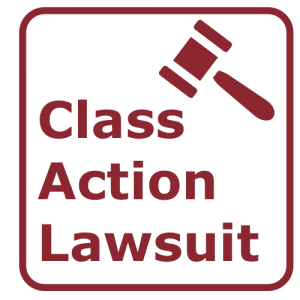Debunking Course Activity Lawsuits: A Closer Take A Look At Lawful Process
Course action claims can be intimidating and complex, usually shrouded in a veil of secret for those unfamiliar with the lawful procedures entailed. From understanding the standards for course activity eligibility to the function of course reps, and from the process of course qualification to the resolution of these lawsuits, we will certainly unwind the details and lost light on the internal workings of this lawful mechanism.
Comprehending Course Action Lawsuits
Understanding Course Activity Lawsuits requires an extensive assessment of the legal procedures involved in cumulative litigation. Course action lawsuits are a type of lawsuit where a team of people with comparable claims or grievances sign up with with each other to start a claim against a common accused. This kind of litigation allows individuals with limited resources to jointly look for justice, as it incorporates the strength of several individual cases into a solitary lawsuit.
The procedure starts with the identification of a lead plaintiff or course agent who submits the initial grievance in behalf of the whole course. The court after that determines whether the situation fulfills the needs for course certification, that include commonness, numerosity, typicality, and competence of depiction. If accredited, the court informs prospective class participants, giving them an opportunity to opt-out if they wish to seek their cases individually.
When the course is licensed, the litigation proceeds with numerous phases, including discovery, movement method, and, if necessary, trial. The outcome of the lawsuit can lead to a negotiation or a judgment, which is binding on all class members unless they choose to opt-out. Course activity claims can incorporate a variety of lawful concerns, such as consumer protection, safety and securities fraud, employment discrimination, and ecological injury.
Recognizing the subtleties of course activity suits is vital for both plaintiffs and accuseds entailed in collective lawsuits. It requires a comprehensive understanding of the lawful requirements for certification, the civil liberties and responsibilities of class participants, and the potential benefits and threats connected with safeguarding or going after versus course activity claims.
Identifying Course Activity Qualification
To identify whether a lawful activity qualifies as a course action claim, particular standards must be met. These requirements are created to make certain that the instance can properly stand for the interests of a huge group of people that have actually suffered similar harm or have actually been impacted by the same problem. The key element in determining course activity eligibility is the visibility of a typical inquiry or issue that affects all prospective course members.
To start with, a class activity suit requires numerosity, which indicates there have to be a significant variety of potential course members involved. This makes sure that a class action is an efficient way to deal with the cases of a big team of individuals, instead of having each individual file a specific legal action.
Second of all, there need to be commonness amongst the claims of the prospective class members. This suggests that there have to be an usual question of regulation or truth that is central to the situation. If each prospective course participant's insurance claim is unrelated and one-of-a-kind to the others, a course activity may not be suitable.

The Function of Course Representatives
Class representatives play a critical role in course activity suits by representing the interests of the entire course. These individuals are chosen from within the course to serve as the general public face of the claim and are accountable for making decisions in support of all class participants. The role of class representatives includes numerous obligations and duties throughout the legal proceedings.
One of Archer-Daniels-Midland class action lawsuit the main obligations of class reps is to give information and aid to their fellow course members. They offer as a factor of call and interaction in between the class members and the lawyers representing them. This consists of keeping the course members informed about crucial updates, addressing their concerns, and resolving any issues they might have.
Course agents additionally have the obligation to actively join the litigation procedure (Archer-Daniels-Midland class action lawsuit). This includes working closely with the attorneys to develop lawful methods, gathering proof, and supplying statement if essential. They must be actively associated with all facets of the situation to make sure that the very best passions of the whole class are stood for
Moreover, class reps are accountable for approving negotiations or other resolutions gotten to in the suit. They must meticulously examine the terms of the negotiation and make a decision that remains in the most effective passion of the entire course. This decision-making process calls for cautious consideration and consultation with the course members.
The Refine of Course Accreditation
The procedure of accrediting a course in a course action suit includes a comprehensive analysis of details standards to figure out if the situation fulfills the needed demands for class qualification. Class qualification is a crucial action in the litigation procedure as it determines whether a legal action can continue as a course activity, enabling a huge team of individuals with similar claims to be stood for jointly by one or a few individuals.
To obtain class qualification, the plaintiff has to show that the suggested class satisfies particular requirements. These prerequisites typically include numerosity, commonality, typicality, and adequacy of representation. Numerosity requires that the course is so large that joinder of all members is not practical. Commonality demands that there are questions of regulation or fact typical to the course members. Typicality calls for that the cases or defenses of the course reps are regular of those of the class. Competence of representation guarantees that the class agents will rather and appropriately shield the rate of interests of the course.
The court will look at these requirements and the plaintiff's evidence to identify if the recommended course meets the essential needs. The court might additionally consider various other factors, such as whether a course activity is the premium method to fix the conflict and whether the class is adequately natural.

As soon as the court grants course qualification, the suit can these details proceed as a class activity, allowing the plaintiffs to collectively look for alleviation and possibly get a judgment or negotiation that benefits the whole class.
Solving Course Action Claims
When class certification has been granted, the following action in dealing with a course action lawsuit is to navigate the procedure of litigation or negotiation arrangements. Lawsuits refers to the lawful proceedings in court, where the plaintiff's attorney presents evidence and disagreements to sustain their insurance claims, and the accused's lawyer counters with their very own evidence and disagreements. This process can include various stages, such as pretrial movements, exploration, and trial.
On the other hand, settlement negotiations look at this now involve conversations in between the events to get to an equally acceptable resolution without going to test. Settlement supplies might be made at any stage of the lawsuits procedure, and if both parties concur, a settlement arrangement is gotten to.
Conclusion
In verdict, course action suits play an important role in giving justice and settlement to huge groups of people who have actually been damaged by the very same entity. By designating and accrediting a course course representatives, the legal procedure becomes a lot more available and effective for the plaintiffs. Solving these suits can be a facility and lengthy process, but it is vital in holding corporations accountable for their actions and making certain reasonable results for all impacted parties.
From comprehending the criteria for class activity eligibility to the function of course agents, and from the procedure of course accreditation to the resolution of these lawsuits, we will unwind the intricacies and shed light on the inner operations of this lawful device. The essential element in determining course action eligibility is the presence of a common inquiry or concern that influences all possible course participants.
If each possible class participant's insurance claim is special and unassociated to the others, a class activity may not be ideal.
Course reps play an essential duty in class action claims by standing for the rate of interests of the entire class.As soon as class accreditation has been provided, the next step in solving a class activity claim is to browse the procedure of lawsuits or negotiation arrangements.